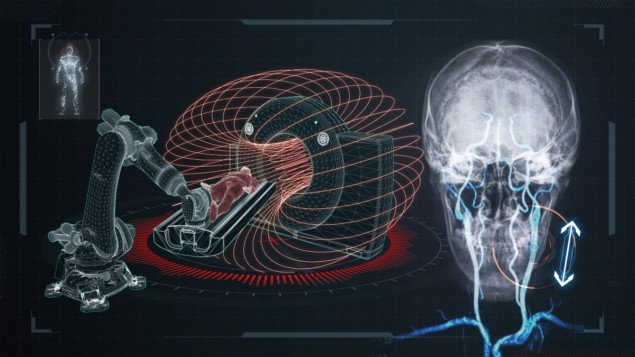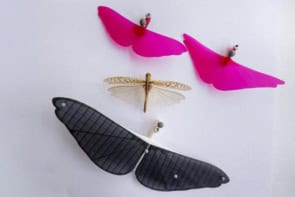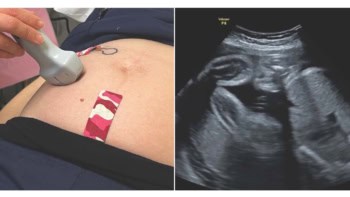
A team of researchers from the NanoRobotics Laboratory at Polytechnique Montréal has demonstrated a new technique that uses the fringe field of a clinical MRI scanner to enable robotic navigation of tethered instruments in deep vascular regions. The approach could one day lead to significant improvements in a number of medical procedures, including neurosurgery for the treatment of aneurysms (Science Robotics 10.1126/scirobotics.aax7342).
The pioneering technique, dubbed fringe field navigation (FFN), used the superconducting magnet of an MRI scanner to generate a strong magnetic field that pulls a micro-catheter capped with a spring-shaped magnetic tip through complex vascular structures. The team demonstrated that the instruments could successfully travel through narrow and complex areas in the neck and brain arteries of live pigs, which are well out of reach for existing manual procedures and magnetic platforms.

As co-author Arash Azizi, until recently a graduate research assistant at Polytechnique Montréal, explains, the lines of this magnetic field are distributed around the scanner. And manufacturers typically use shimming techniques to increase the gradient at the entrance of the tunnel so that the stray field – also known as the fringe field – decays faster the further it is from the scanner.
“The high gradient of the magnetic field available at the entrance of the tunnel of MRI scanners motivated us to use it for the purpose of magnetic navigation,” Azizi explains. “The MRI fringe field is static. So, we used a robotic system to position the sample with six degrees-of-freedom in the fringe field to apply directional magnetic gradient forces. Also, between [moving] the MRI and the sample, it is easier to move the sample.”
Potential applications
The main application for the new magnetic system is the improved navigation of a micro-tethered instrument through what Azizi describes as the “bifurcations and tortuous paths” of deep vascular regions. Existing techniques make use of a guidewire that comes into contact with vessel walls at multiple locations – with a small diameter micro-guidewire with negligible stiffness required for targeting narrower vessels.
However, because the insertion of such devices into vessels is often impractical after passing along what Azizi calls a “distance of tortuous vessels”, he and his team proposed an innovative method that applies a magnetic pulling force on the tip of the device, enabling users to reach deeper locations. Looking ahead, Azizi believes the technique has a high potential for use in neurosurgery to treat aneurysm and occlusion in the cerebral artery.
“FFN has been developed to navigate tethered instruments in the vascular systems, so it can be used for endovascular intervention in different organs,” Azizi says. He notes that the researchers believe that FFN is not an appropriate tool for cardiologists, as it relies on robotic positioning of the patient, which is relatively slow compared with the fast dynamics of the heart.
“The next step to advance this project is to develop custom micro-guidewire depending on the application and the region of intervention inside the body, and designing intervention protocols for FFN intervention in different regions of the body,” Azizi adds.
Co-author Sylvain Martel, director of the NanoRobotics Laboratory, agrees that interventions in the brain, as well as in other physiological spaces that are difficult to access – for example in urology –are excellent applications for the technology.
“Miniaturization in technology is also progressing very fast. As a result, technology becomes smaller [and it becomes more and more possible] to bring them deeper in the human body, as FFN does for diagnostics,” he says. “I believe that the need for – as well as the number of – applications will increase in line with the level of miniaturization of instruments that can be navigated deeper into the body.”



